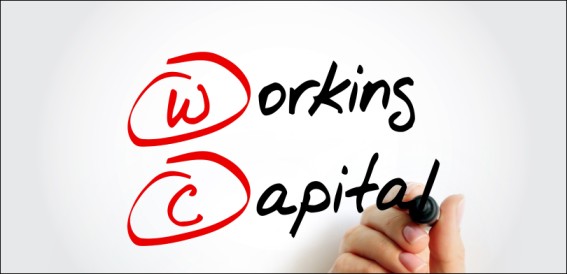A company’s financial health can be measured in various ways, and gross working capital is one of them. It helps determine how well short-term expenses can be managed using current assets. This article explains gross working capital, how to calculate it, and why it’s important. It explains how gross working capital differs from net working capital.
What Is Gross Working Capital?
Gross working capital is the total value of a business’s current assets that can be quickly converted into cash. These include assets such as cash, accounts receivable, inventories, and short-term investments. In other words, gross working capital represents the resources a company has available to turn into cash in the short term, within its operating cycle, generally within one year.
While gross working capital assists in assessing available funds, it does not deal with financial obligations such as debts and payables. Thus, companies often prefer looking into net working capital to view liquidity in all aspects, including assets and liabilities.
Gross Working Capital Calculation
The calculation of gross working capital is straightforward. It is the total value of all current assets a company owns.
Gross Working Capital Formula:
Gross Working Capital=Cash+Accounts Receivable+Inventory+Short-Term Investments+Other Current Assets
These assets include cash for immediate expenses, accounts receivable from customers, inventory for sales, short-term investments for quick returns, and other liquid assets. By calculating gross working capital, businesses and analysts can evaluate the company’s ability to meet short-term financial obligations and maintain smooth operations.
Begin your investing journey today. Your Demat account is the first step.
Significance of Gross Working Capital
Gross Working Capital is important for making financial decisions and planning in the following ways:
- Liquidity Measurement: This indicates the total pool of assets used to meet short-term liabilities.
- Assurance to Investors: Investors consider these numbers while determining the flexibility and stability of the company.
- Operational Efficiency: A company has high gross working capital when it has enough money to run its daily operations smoothly.
- Comparing with Liabilities: Comparing gross working capital with current liabilities helps to check if a company has enough assets to pay its short-term debts.
- Financial Planning: Gross working capital is used in financial planning to manage short-term investments and cash flow.
Gross working capital is useful for understanding a company’s short-term financial position but does not account for liabilities. This means it cannot be the only factor in financial analysis. To get a complete picture, businesses also consider net working capital, including assets and liabilities, providing a more balanced view of financial health.
Difference between Gross Working Capital and Net Working Capital
| Gross Working Capital | Net Working Capital | |
| Definition | Gross working capital represents the total current assets. | Net working capital represents current assets minus current liabilities. |
| Liquidity Insight | Gross working capital provides a general view of the availability of assets. | Net working capital widens the scope of understanding a company meeting short-term commitments. |
| Financial Well Being | Gross working capital ensures a company has enough short-term assets for operations and obligations. | Net working capital more precisely measures the company’s operational liquidity and solvent position. |
| Borrowing Effects | Borrowings elevate gross working capital. | Net working capital experiences an increase in the company’s management of liabilities and cash flow. |
| Use Scenario | Gross working capital remains a useful reference in financial management. | Net working capital has been widely applied in accounting and financial reporting. |
Conclusion
Gross working capital is the total value of all a company’s current assets and is an important criterion in financial analysis. However, it is not suitable for use alone when judging liquidity. Therefore, it specifically speaks of the net working capital, which is an accurate view of drawing consideration of both assets and liabilities. Once one understands both concepts, one can frame financial health and growth decisions for the company and its investors. Additionally, analysing net working capital helps assess a company’s ability to manage short-term obligations effectively. A balanced approach to both metrics ensures better financial planning and resource allocation.












